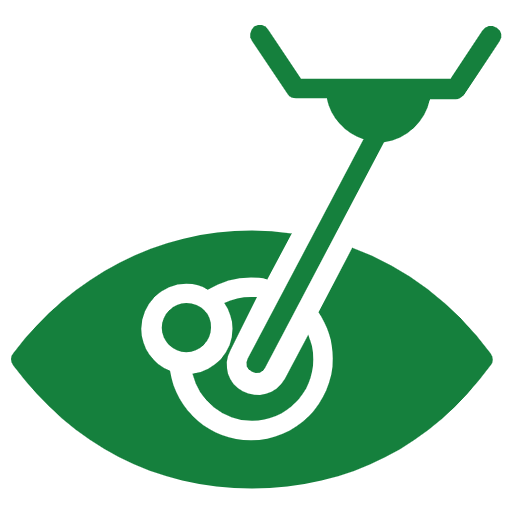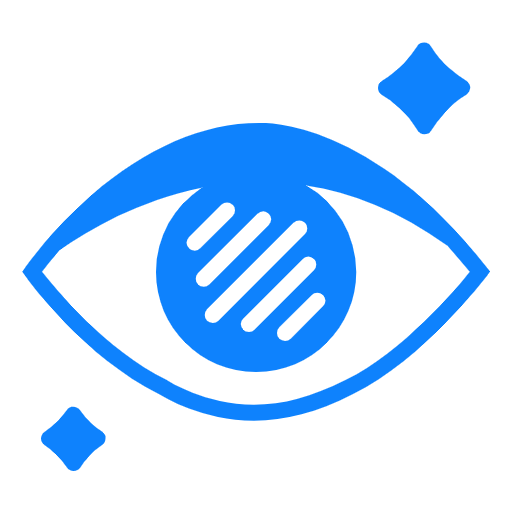
Comprehensive eye exam
A comprehensive eye exam is a thorough evaluation of the eyes and the visual system, aimed at assessing overall eye health and identifying any potential issues. Here’s an overview of what such an exam typically involves:
1. Patient History
Your eye care provider will ask about your personal and family medical history, including any current medications, past eye problems, or symptoms you’re experiencing (like blurry vision, eye strain, etc.).
2. Visual Acuity Test
This is the classic “20/20 vision” test. You’ll read letters from a chart placed at a certain distance to check your sharpness of vision.
3. Refraction Assessment
Determines whether you need glasses or contact lenses by measuring how light is focused on your retina. This test helps identify nearsightedness, farsightedness, and astigmatism.
4. Eye Movement and Coordination Tests
The eye doctor will check how well your eyes move together, as well as their ability to focus and track objects. This helps detect issues like strabismus (crossed eyes) or problems with eye coordination.
5. Pupil Dilation
Special eye drops are used to widen (dilate) your pupils. This allows the doctor to examine the back of your eye, including the retina, macula, and optic nerve, for any signs of diseases or conditions like glaucoma, cataracts, or diabetic retinopathy.
6. Tonometry (Intraocular Pressure Test)
This test measures the pressure inside your eyes. Elevated eye pressure can be a sign of glaucoma.
7. Slit Lamp Exam
A slit lamp is a microscope that shines a narrow beam of light into the eye to check for signs of cataracts, eye injuries, or other conditions in the front parts of your eyes (cornea, iris, and lens).
8. Retinal Exam
The retina, where the light is focused and visual images are processed, is examined using specialized instruments. This can detect eye diseases such as macular degeneration, diabetic retinopathy, or retinal detachment.
9. Testing for Color Vision
Your doctor may perform a test to check your color perception, which can help identify any color vision deficiencies.
10. Assessment for Systemic Conditions
Eye exams can also help identify signs of other health conditions, such as high blood pressure or diabetes, as these can affect the eyes.
Why is a Comprehensive Eye Exam Important?
- Early Detection of Eye Diseases: Many eye conditions don't show symptoms until they are more advanced. A thorough exam can catch issues early.
- Better Vision: Regular exams ensure you have the correct prescription for glasses or contacts.
- Overall Health: Eye exams can also detect systemic conditions like high blood pressure, high cholesterol, and diabetes, which can affect vision.
Get a free consultation
services
Eye Care Services
A cataract is a condition where the natural lens of the eye becomes cloudy, making your vision blurry, dim, or distorted. It’s like looking through a foggy window — and over time, it can seriously affect your ability to see clearly, especially at night or in bright light.

See Life Clearly — Without Glasses or Contacts
Waking up and seeing the world clearly without reaching for your glasses — that’s the freedom LASIK offers.
LASIK (Laser-Assisted In Situ Keratomileusis) is one of the most advanced and trusted vision correction procedures in the world. It works by reshaping the cornea using a precise laser, allowing light to focus properly on the retina — resulting in sharper, clearer vision.
Protecting the Window to Your Vision
The retina is the thin layer of tissue at the back of your eye that senses light and sends signals to your brain — it’s what allows you to see. When something goes wrong with your retina, it can affect your vision permanently. That’s why timely diagnosis and treatment are crucial.
Protect Your Vision Before It’s Too Late
Glaucoma is often called the “silent thief of sight” — because it causes slow, irreversible vision loss with little to no symptoms in the early stages. It damages the optic nerve, usually due to high pressure inside the eye, and if left untreated, can lead to permanent blindness.




